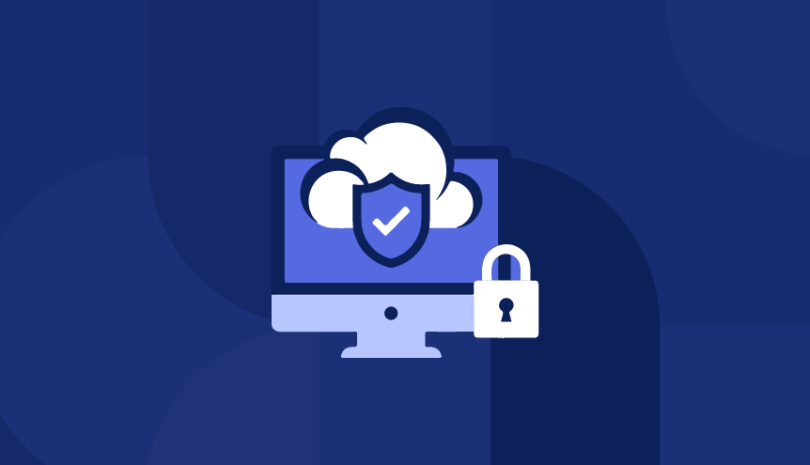Modern supply chains are more interconnected than ever, and with that complexity comes greater regulatory risk. As organizations expand across borders and work with a broader range of third parties, they face increasing pressure to comply with evolving standards in data protection, trade, ESG, and cybersecurity.
Non-compliance is not just a legal issue. It can lead to fines, operational disruption, loss of business, and long-term reputational harm. According to the World Economic Forum, supply chain vulnerabilities continue to be a top concern for risk leaders globally.
To manage these challenges, organizations need a clear understanding of where compliance risks emerge and how to address them. In this blog, we’ll break down the 10 most common supply chain regulatory compliance risks and share practical strategies to identify, mitigate, and monitor them effectively.
1. Lack of Supplier Visibility
Many organizations still rely on outdated spreadsheets or disconnected tools to track their vendor relationships. This often leads to incomplete records, missing contacts, and little or no insight into sub-tier suppliers. Without full visibility, it becomes difficult to identify where risks exist or ensure compliance across the entire supply chain.
This is especially problematic when regulations require proof of supplier oversight. Whether it’s GDPR, DORA, or ESG-related reporting, a lack of traceability can lead to audit failures, fines, and reputational damage.
To mitigate this risk, organizations should build and maintain a centralized supplier inventory. This inventory should include not only direct vendors but also their subcontractors and service providers. Suppliers can then be grouped into risk tiers based on their role, access to sensitive data, and geographic exposure. A tiered approach enables more targeted oversight, helping you focus resources where the risk is highest.
2. Inadequate Due Diligence
Rushing through vendor onboarding or skipping due diligence can introduce major regulatory risks. Without proper vetting, you may unknowingly partner with vendors that lack essential controls or fail to comply with key frameworks like GDPR, DORA, NIS2, or emerging ESG mandates.
Due diligence should not be a checkbox exercise. It requires a structured, repeatable process that examines the vendor’s policies, practices, certifications, and risk posture. This process is especially critical for vendors with access to sensitive systems or personal data.
To reduce the risk of non-compliance, implement standardized onboarding assessments that align with your organization’s risk and regulatory profile. Use customizable questionnaires to gather details on security measures, privacy practices, and governance. Background checks and certification reviews can further validate a vendor’s credibility. Document each step to support audit readiness and maintain a consistent baseline for vendor selection.
3. Third-Party Vulnerabilities
Your security posture is only as strong as your weakest vendor. Many high-profile data breaches in recent years have been traced back to third parties with poor security practices. If a supplier’s system is compromised, it can expose your organization to significant regulatory, financial, and operational consequences.
Third-party vulnerabilities are a leading cause of compliance failures, especially in industries where data protection laws require continuous oversight. Without visibility into a vendor’s security controls, it’s difficult to detect risk until it’s too late.
Mitigation begins with security risk scoring. By evaluating a vendor’s cyber maturity and exposure, you can identify potential threats early. Require key certifications like ISO 27001 and mandate regular reassessments. Most importantly, use a platform like Panorays to enable continuous monitoring across your entire vendor ecosystem. This provides real-time alerts when a vendor’s risk posture changes, helping you stay compliant and act before issues escalate.
4. Regulatory Misalignment
Supply chains often span multiple countries, each with its own set of laws and compliance standards. Vendors that operate in different regions may follow inconsistent protocols or miss key requirements altogether. This misalignment increases the risk of violations, especially for companies subject to cross-border regulations.
For example, a vendor compliant with U.S. standards may fall short of European expectations under GDPR or NIS2. If those gaps aren’t identified and addressed, your organization may be held accountable.
To stay compliant, start by mapping out jurisdictional requirements relevant to your vendor network. Use regulatory intelligence tools to keep track of changes across regions. Review vendor contracts and ensure they include clauses that reflect local compliance obligations. This includes data handling, breach notification timelines, and audit rights. Regularly revisiting these agreements helps align expectations and avoid enforcement action tied to regional non-compliance.
5. Poor Contractual Safeguards
Even the best policies can fall short if your contracts don’t support them. Weak or missing clauses around compliance obligations, breach notification, and audit rights leave your organization exposed. Regulators increasingly expect companies to hold their vendors accountable through clear, enforceable terms.
Common gaps include contracts that lack service-level agreements (SLAs), fail to require certification updates, or omit language around data security standards. These omissions can lead to compliance violations or delays in responding to incidents.
To mitigate this risk, standardize your vendor contracts. Develop templates that include clear terms around regulatory responsibilities, including breach response protocols, documentation requirements, and audit access. Include SLAs for security performance and make sure vendors agree to maintain compliance with relevant frameworks throughout the relationship. Periodic contract reviews ensure your safeguards evolve as risks and regulations change.
6. ESG & Human Rights Violations
Global supply chains can include vendors operating in regions with limited oversight on environmental and labor standards. If a supplier engages in unethical practices, such as forced labor, unsafe working conditions, or environmental violations, your organization may face legal and reputational fallout, especially under emerging ESG regulations.
This is more than a public relations issue. Regulations like the German Supply Chain Act and proposed EU directives hold companies accountable for ESG violations across their supply chain, even if they occur several tiers deep.
To manage this risk, integrate ESG assessments into your vendor evaluation process. Use industry-recognized certifications like SA8000, EcoVadis, or SEDEX to validate compliance. Track supplier performance over time and document any remediation efforts. Make ESG accountability part of your contract terms and conduct periodic reviews to ensure vendors meet expectations. This approach strengthens resilience and helps build a more ethical, sustainable supply chain.
7. Inconsistent Documentation
When compliance issues arise, regulators expect you to show proof, not just policy. Without consistent documentation of assessments, certifications, and incident histories, your organization may struggle to demonstrate due diligence during audits or investigations.
Many businesses still rely on fragmented systems, where compliance records are scattered across emails, spreadsheets, or siloed platforms. This not only increases the risk of gaps but also slows down response times when regulators request evidence.
To avoid this, adopt a centralized compliance management platform that stores all relevant records in one place. Use it to log vendor assessments, contract clauses, certifications, and communication history. Timestamped records improve audit readiness and show that you’ve taken proactive steps to monitor compliance. Establish clear ownership for recordkeeping across departments, and schedule regular reviews to ensure the information stays accurate and complete.
8. Disruption from Sanctions or Trade Restrictions
Sanctions and trade restrictions can change quickly, and companies that unknowingly work with blacklisted or embargoed vendors may face serious consequences. These can include regulatory penalties, frozen transactions, and reputational harm, particularly in sectors subject to export controls or financial regulations.
The risk is heightened when supplier data is outdated or screening is only done during onboarding. Without ongoing checks, changes in ownership, political status, or legal standing may go unnoticed.
To reduce exposure, screen all vendors and sub-tier entities against up-to-date sanctions and politically exposed persons (PEP) lists. Use automated tools that update daily and flag potential matches for review. Document screening outcomes and build them into your onboarding, renewal, and monitoring workflows. Staying ahead of sanctions risk is essential for maintaining business continuity and regulatory compliance across jurisdictions.
9. Inadequate Incident Response
Even with strong controls in place, incidents will happen. The real test of compliance often lies in how quickly and effectively you respond. Without a coordinated response plan that includes third parties, your organization may fall short of legal obligations and damage stakeholder trust.
Many companies still lack clarity on who to contact during an incident, what data must be shared, or how vendor actions fit into the broader response process. This is especially risky when regulations set specific breach reporting timelines.
To address this, require vendors to maintain an incident response plan and conduct periodic tabletop exercises. Build coordinated response protocols into your contracts, and establish clear communication channels for breach notifications. Internally, make sure your security and compliance teams know how to engage vendors during a crisis. Proactive planning helps minimize disruption and shows regulators you take accountability seriously.
10. Lack of Ongoing Monitoring
One-time assessments are no longer enough. Regulations, threat landscapes, and vendor conditions change frequently. If your organization only evaluates vendor risk during onboarding, you risk missing emerging issues that can lead to compliance failures.
Ongoing monitoring is especially important for vendors with access to sensitive data, critical operations, or regulated environments. Static assessments won’t capture changes in financial health, cyber posture, or compliance standing.
To mitigate this risk, implement continuous monitoring tools that track cyber, financial, and compliance indicators across your vendor base. Look for platforms that provide real-time alerts when a vendor’s risk profile shifts. Set up regular reassessment intervals and escalate reviews based on vendor criticality. By embedding monitoring into your third-party risk program, you’ll stay ahead of potential issues and maintain a stronger compliance posture over time.
Supply Chain Regulatory Compliance Solutions
Managing regulatory compliance across your supply chain requires more than manual reviews or one-time assessments. A proactive, technology-enabled approach gives organizations the visibility, consistency, and speed needed to stay ahead of evolving regulations and vendor-related risks.
Start by conducting a gap assessment of your current third-party risk processes. Identify areas where documentation is incomplete, oversight is inconsistent, or monitoring is reactive rather than continuous. From there, invest in a solution that helps centralize risk data, streamline assessments, and provide real-time insight into your vendor ecosystem.
Panorays enables organizations to manage supply chain compliance with confidence. The platform offers automated risk assessments, continuous monitoring, and detailed visibility into third- and fourth-party relationships, all mapped to regulatory requirements. Whether you’re focused on GDPR, ESG, DORA, or global trade controls, Panorays helps ensure your vendors stay compliant.
Book a personalized demo to see how Panorays can support your compliance goals.
Supply Chain Regulatory Compliance FAQs
-
Supply chain compliance risks refer to the legal, operational, and reputational threats that arise when vendors fail to meet regulatory requirements. These can include data privacy violations, export control breaches, ESG infractions, or failure to comply with industry-specific standards.
-
Regulators increasingly hold organizations accountable for the actions of their third parties. Non-compliance can lead to fines, operational disruptions, and reputational damage. Ensuring supply chain compliance helps reduce risk, build trust with stakeholders, and support long-term business resilience.
-
Vendors often have access to sensitive systems or data. If they lack adequate security controls, they can become an entry point for attackers. Regulations like GDPR and DORA require organizations to assess and monitor third-party cybersecurity practices to remain compliant.
-
Key trends include rising ESG disclosure requirements, stricter enforcement of cross-border regulations, increased regulatory focus on fourth-party risk, and the growing use of AI-driven monitoring tools. Organizations are expected to take a more active role in assessing, documenting, and proving supply chain compliance.



